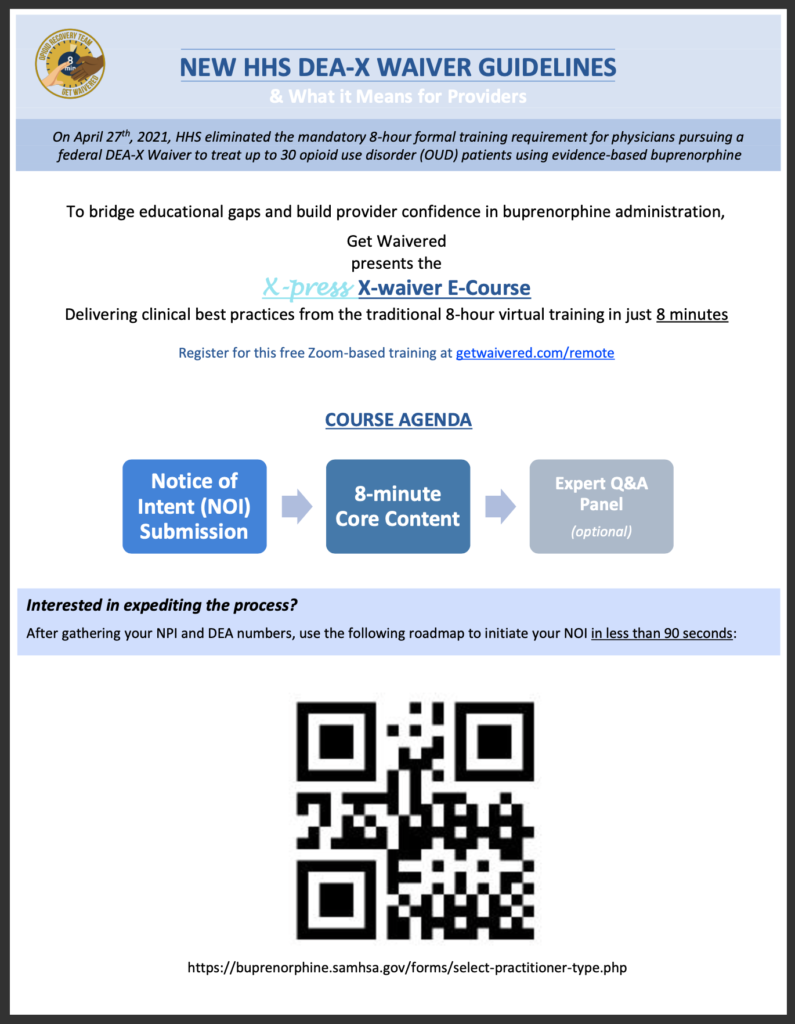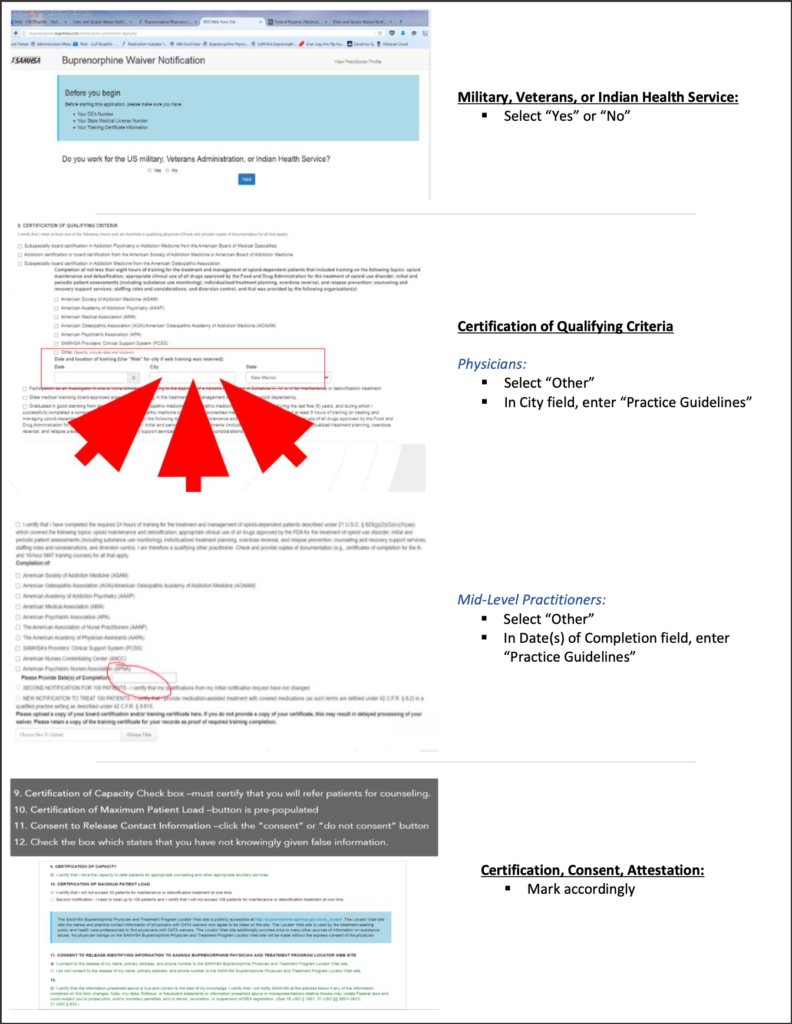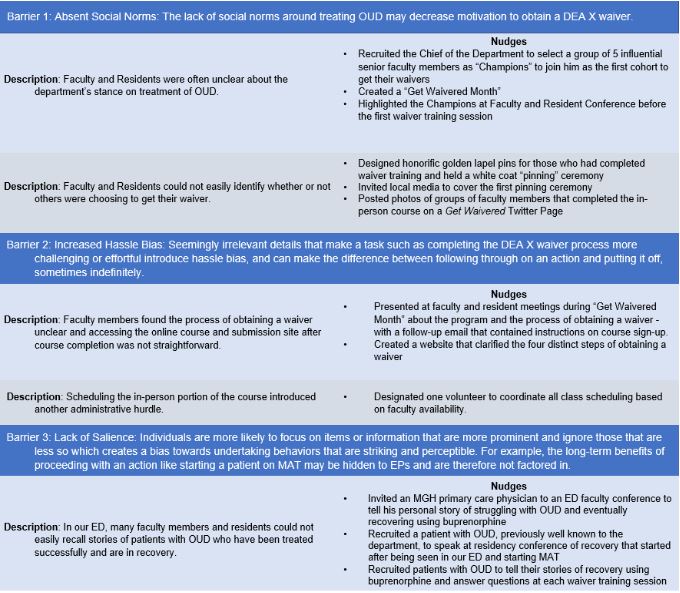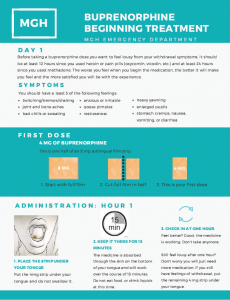A 34‐year‐old woman with anxiety and recent bimalleolar ankle fracture, status‐post open reduction/internal fixation, presents requesting detoxification from opioids. Eighteen months ago, she was started on a short course of oxycodone after undergoing a minor operation to repair a fractured ankle she sustained during a trip and fall down a short stairwell at her daughter’s day care facility. She finished her prescription and continued to feel pain, tactile chills, and mild nausea. Her PCP felt uncomfortable prescribing her additional opioids, so she began using leftover Percocet from her husband’s previous injury. After these ran out, with persistent pain and seeking feelings of “normalcy,” she started seeking prescription opioids from friends and family and eventually began to buy them from a drug dealer in the town where she grew up. As the cost of her addiction rose, she transitioned to intranasal heroin use one week prior to presentation. After she sobered from this experience, she realized she needed help overcoming her addiction. Accompanied by her husband, she presented for evaluation in the ED requesting “detoxification.” She told the triage nurse, “I didn’t know where else to go … ”
“Seeking detox” for OUD is an increasingly common chief complaint in EDs, particularly those in regions most affected by the opioid epidemic. In our experience, a typical ED would offer this patient assistance in accessing detoxification from opiates in a variety of settings, including nonhospital addiction or mental health treatment facilities, intensive outpatient and partial hospitalization programs, and acute care inpatient settings.13 Some EDs may offer a social worker, recovery coach, or case manager to help her find a facility able to accept her. Others may allow her to make phone calls from the ED waiting room. Unfortunately, these options either refer the patient to non–evidence‐based care, as in the case of referral to detox facilities, or discharge the patient with high risk of relapse, without offering immediate treatment with buprenorphine that has a proven benefit.
Consider, on the contrary, the treatment this same patient received when she presented to this ED for her ankle fracture. She was seen by a provider in the ED who performed diagnostic testing, offered her initial treatment with a splint, and ensured that she had close follow‐up for more definitive treatment with an orthopedic surgeon the next day. It would be unimaginable for a provider in this scenario to diagnose the fracture, forgo splinting it (initial treatment in this case), and discharge her with a list of orthopedic surgeons and ask the patient to keep calling until one could see her within a few days. This is analogous to what is happening to patients with OUD in most EDs currently.
We propose that this patient, upon arrival to the ED, should have undergone brief screening and counseling to determine her eligibility for and interest in medication therapy with buprenorphine. If she were a good candidate, and were in mild to moderate withdrawal, she would have been administered 8 mg of sublingual buprenorphine in the ED and scheduled for follow‐up in a partnering specialized addictions clinic the next morning where she could be maintained on buprenorphine. She could then be discharged home already receiving appropriate treatment, with a plan in place for close follow‐up.
Emergency Departments can implement such a treatment pathway with relatively few barriers. ACEP already offers guidelines for OUD screening and counseling, which would enable clinicians to assess a patient’s candidacy for treatment. Although medication therapy with buprenorphine is highly regulated under the federal DATA 2000 law, emergency physicians are permitted to administer up to 72 hours worth of medication treatment without needing to obtain the DEA waiver required for other providers. As such, no additional licensing is required, although obtaining a waiver offers optimal flexibility by allowing providers to discharge patients with a short prescription to link into community based care.
This leaves only one major institutional barrier to ED induction of buprenorphine, which is the need for next‐day evaluation in clinic by a licensed buprenorphine prescriber. This presents an important opportunity for EDs to collaborate with our colleagues in internal medicine, family medicine, and psychiatry. These professions are rapidly training their clinicians to prescribe buprenorphine to increase treatment capacity. At our institution a “bridge” clinic was established to fill the many gaps in the current treatment system by offering walk in addiction services including on demand medication treatment. Such clinical models with capacity for same or next day referrals should be considered a standard of care for EDs, particularly those in academic centers. Just as an ED patient can typically be guaranteed timely orthopedic follow‐up after a fracture, they should have the same assurances when requiring OUD treatment.








